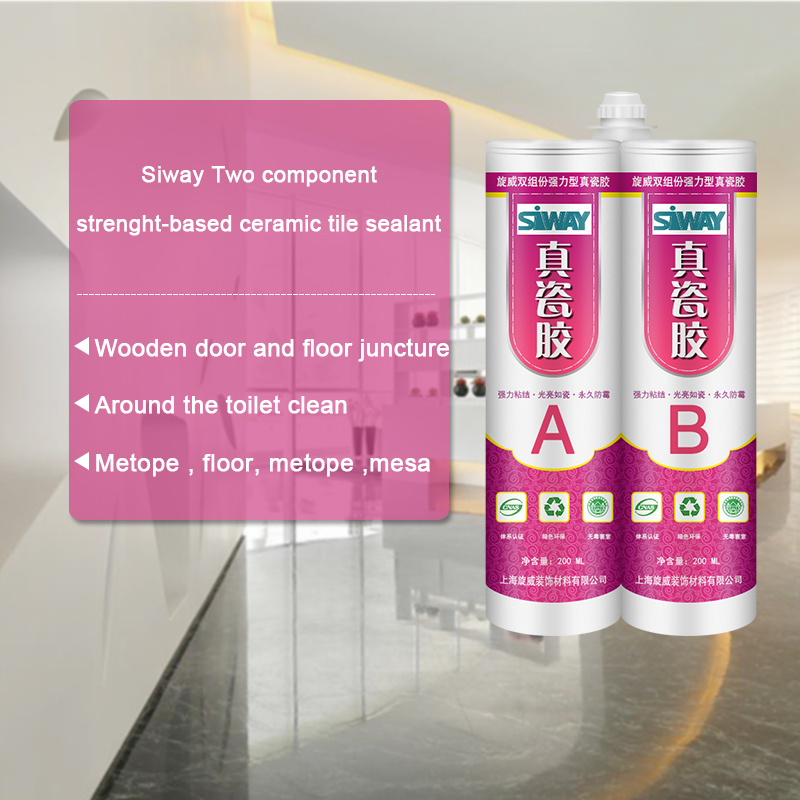Customized Supplier for SV-666 Neutral silicone sealant for Bangkok Manufacturer
Short Description:
Description SV-666 neutral silicone sealant is a neutral curing glue single component, the modulus of the. It is specially designed for windows and doors caulking sealing general plastic doors and windows. It has good adhesion to glass and aluminum alloy, and has no corrosion. Where to use It is fit for multiple purpose sealing and bonding applications to form a silicone rubber adhering to adjacent substrates e.g. glass, ceramic, tile, wood and metal. Key Features 1. 100% silicone 2. Eas...
To constantly improve the management system by virtue of the rule of "sincerely, good faith and quality are the base of enterprise development", we widely absorb the essence of related products internationally, and constantly develop new products to meet the demands of customers for Customized Supplier for SV-666 Neutral silicone sealant for Bangkok Manufacturer, "Passion, Honesty, Sound service, Keen cooperation and Development" are our goals. We are here expecting friends all over the world!
Description
SV-666 neutral silicone sealant is a neutral curing glue single component, the modulus of the. It is specially designed for windows and doors caulking sealing general plastic doors and windows. It has good adhesion to glass and aluminum alloy, and has no corrosion.
Where to use
It is fit for multiple purpose sealing and bonding applications to form a silicone rubber adhering to adjacent substrates e.g. glass, ceramic, tile, wood and metal.
Key Features
1. 100% silicone
2. Easy to use
3. Waterproofing and weatherproofing
4. Primerless adhesion to most building materials
5. 12.5% movement capability
Technical data sheet
| Test standard | Test project | Unit | value |
| Before curing——25℃,50%R.H. | |||
| GB13477 | Flow, sagging or vertical flow | mm | 0 |
| GB13477 | surface drying time(25℃,50%R.H.) | min | 30 |
|
GB13477 |
Operating time | min | 20 |
| Curing time(25℃,50%R.H.) | Day | 7-14 | |
| Sealant curing speed and operating time will have different with different temperatures and temperature, high temperature and high humidity can make sealant curing speed faster, rather low temperature and low humidity are slower.21 days after curing——25℃,50%R.H. | |||
| GB13477 | Durometer Hardness | Shore A | 28 |
| GB13477 | The ultimate tensile strength | Mpa | 0.7 |
| Temperature stability | ℃ | -50~+150 | |
| GB13477 | Movement capability | % | 12.5 |
Certification
JC/T881-2001 12.5E;GB/T14683-2003 12.5E
Color
Black,White,Gray
Package
300ml in cartridge * 24 per box, 590ml in sausage *20 per box
Shelf life
12 months
Note
If you want the TDS or MSDS or other details, please contact with our sales person.
What is RTV SILICONE? What does RTV SILICONE mean? RTV SILICONE meaning – RTV SILICONE definition – RTV SILICONE explanation.
Source: Wikipedia.org article, adapted under https://creativecommons.org/licenses/by-sa/3.0/ license.
RTV Silicone (Room Temperature Vulcanization silicone) is a type of silicone rubber made from a two-component system (base plus curative; A+B) available in a hardness range of very soft to medium – usually from 15 Shore A to 40 Shore. RTV silicones can be cured with a catalyst consisting of either platinum or a tin compound such as dibutyltin dilaurate. Applications include low-temperature overmolding, making molds for reproducing, and lens applications for some optically clear grades.
To produce the material, the silicone rubber is mixed with the curing agent or vulcanizing agent. Usually the mixing ratio is a few percent. In order for the RTV silicone to reproduce the surface texture, attention is paid to the cleanliness of the original. Vacuum deairing removes entrained air bubbles from the mixed silicone and catalyst to ensure optimal tensile strength, which affects reproduction times. In casting and mold making, RTV silicone rubber reproduces fine details and is suitable for a variety of industrial and art related applications including prototypes, furniture, sculpture and architectural elements. RTV silicone rubber can be used to cast materials including wax, gypsum, low melt alloys/metals and urethane, epoxy or polyester resins (without using a release agent). A more recent innovation is the ability to 3D Print RTV silicones. RTV silicones’ industrial applications include aviation, aerospace, consumer electronics, and microelectronics. Some aviation and aerospace product applications are cockpit instruments, engine electronics potting, and engine gasketing. RTV silicones are used for their ability to withstand mechanical and thermal stress.
RTV silicone rubber has excellent release properties compared to mold rubbers, which is especially an advantage when doing production casting of resins (polyurethane, polyester, and epoxy). No release agent is required, obviating post-production cleanup. Silicones also exhibit good chemical resistance and high temperature resistance (205 °C, 400 °F and higher). For this reason silicone molds are suitable for casting low melt metals and alloys (e.g. zinc, tin, pewter, and Wood’s metal).
RTV silicone rubbers are however generally expensive- especially platinum-cure. They are also sensitive to substances (sulfur-containing modelling clay such as Plastilina, for example) that may prevent the silicone from curing (referred to as cure inhibition). Silicones are usually very thick (high viscosity), and must be vacuum degassed prior to pouring to minimize bubble entrapment. If making a brush-on rubber mold, the curing time factor between coats is long (longer than urethanes or polysulfides, shorter than latex). Silicone components (A+B) must be mixed accurately by weight (scale required) or they do not work. Tin catalyst silicones shrink somewhat, and do not have a long shelf life. Certain types of RTV release acetic acid during the curing process, and this can attack solder joints, causing the solder to detach from the copper wire.
https://www.sincosilicone.com
Email: info@sincosilicone.com
flexible silicone keypad manufacturer





